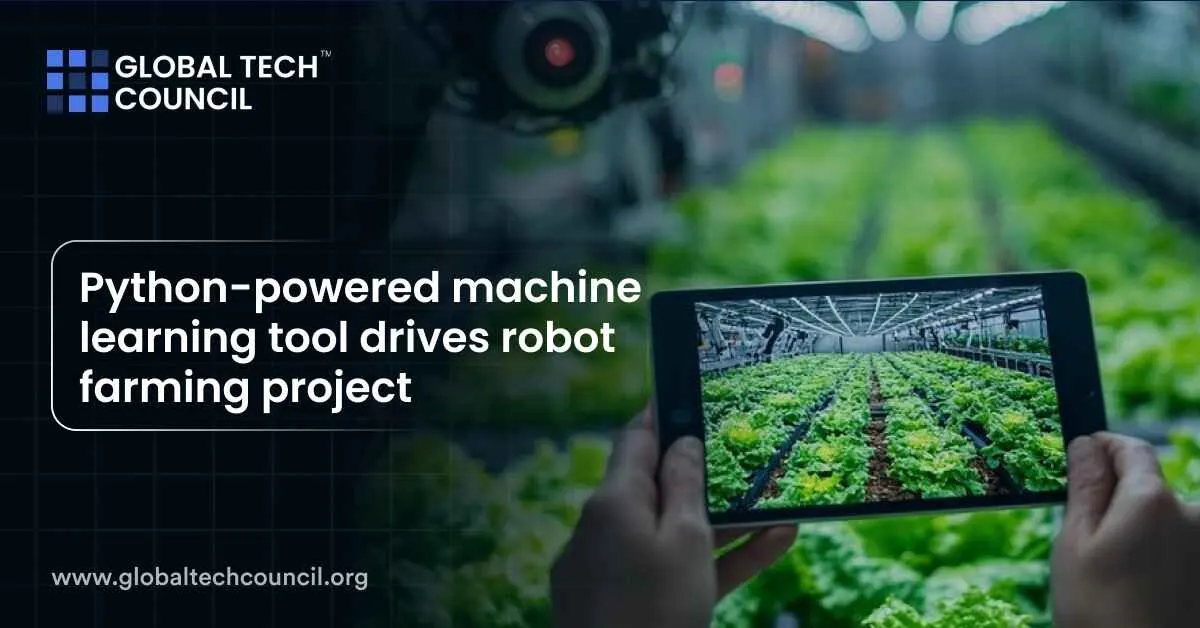
Machine Learning is the new buzzword, and the technology has found its niche is farming. The uses of machine learning in modern agriculture have found amazing uses, including creating more healthy seeds. The core principles of machine learning experiments can show significant changes in agriculture practices, rendering agriculture as one of the fastest-growing Artificial Intelligence and machine learning applications. New solutions are not only coming up, but the accuracy of the sector is also increasing by artificial techniques.
Agriculture is pivotal to the growth of the global economy of the country. With the increasing population, the agricultural system’s pressure is continuously increasing to improve crop productivity and grow more crops. This article sheds light on the applications of machine learning in farming and the Python-based machine-learning framework being equipped by Blue River Technology to develop smarter crop-spraying technology.
Table of Contents
- Machine Learning and Agriculture
- Quality Assessment
- Digital Farming
- Crop Management
- Crop Harvesting
- Crop Analysis
- Robot Farming Project
- PyTorch
- Conclusion
Python is one of the most widely used for Machine Learning. So before taking up a Machine Learning course, it is recommended to go for a Python Crash Course.
Machine Learning and Agriculture
The future of farming is bright because of scalable technologies that can improve sustainability, reduce risk, and make farmer-centric predictions. Here’s a list of innovative techniques that allow the industry to take advantage of the AI-powered solutions:
- Quality assessment– ML technology allows farmers to log into a customized dashboard that shows the accurate assessment of harvestable versus non-harvestable acres on a given day. Alongside, crops can evaluate the crops for desirable features using image analysis. The ultimate yield and product price can also be measured or predicted.
- Digital Farming- With data-driven insights, it is easier to take critical farm decisions that would bring increased crop production precision. ML-enabled digital applications that use sensors can help farmers identify plant species, detect weed infestations, and crop diseases.
- Crop Management– The data collected using drones and other software is used to monitor crops and soil and its fertility. See and Spray robots along with Agricultural spray machines are benefitting plant breeders in using fewer herbicides and water.
- Crop Harvesting– The challenges in the labor force are also being addressed by automation. Lack of labor leads to a million-dollar revenue loss. One harvest robot can replace 30 human laborers and up to 8 acres in a single day.
- Crop Analysis– Drones and computer vision has found use in agriculture. The market is believed to grow to be a 480 million dollars industry by 2027. The drone routes are pre-programmed, and the recorded images are analyzed by the device using computer vision. This also helps in understanding the health of the plant.
Robot Farming Project
AI-powered farming machines using deep learning are being trained on the PyTorch framework. The new machines are being developed to help farmers with fewer resources to produce more food. The latest addition to the developments is the machine-learning framework developed by Blue River Technology to train robotic crop sprayers to map weeds after identifying them as they move through the field. The system uses a high-resolution camera array to instruct the machine the spots where to spray herbicide so that only weeds are killed, and precious crops remain unharmed. The technology would be instrumental for farmers as they try to meet the exploding food demand around the world as land and water resources continue to shrink.
PyTorch – a Facebook AI built platform came into the picture in 2017. The AI library was picked up by Microsoft in subsequent years. In July 2020, the joining announcement was made wherein Microsoft would be the maintainer of the platform and technical caretaker for Windows. PyTorch is an open-source deep learning framework powered by Python. It was built to make research modular and flexible. Developers can build, deploy, add new features to the AI models of the library at speed. PyTorch is being used for the farming project to train its See and Spray robotic farming system because it is flexible and easy to debug. Also, thorough documentation makes it easier for new team members to catch up with the production model and research simultaneously.
The weeds are identified in real-time using the combination of computer vision and machine learning. PyTorch-enabled neural network analyses each frame captured by the camera to pinpoint crops and weeds, and map their locations. It is a bit of a challenge to distinguish the weeds and crops with the naked eye. Robotics technology harnessing machine learning offers a more precise method of picking out weeds. This leads to reducing the amount of herbicide required for weed control and promotes sustainable agricultural practices. The machine learning expert at Blue River Technology worked with many weed scientists and agronomists to train the model accurately for the weed labels. Weights & Biases is a platform used by the company to perform regular testing to improve the performance of the model. This makes it easier for machine learning engineers to visualize training models.
Blue River has built a set of internal libraries on top of PyTorch to perform repeatable machine-learning experiments. The end goal is to have the fastest and most accurate field machines. PyTorch enables quick iteration and deployment of product models in the field.
Conclusion
From predicting yield and crop quality to livestock production, machine learning has shown never been before results in agriculture. This proves that Machine learning training is the new essential for being employed in any industry. A python programming certification with a machine learning certification will open many doors for a professional. Be ready!